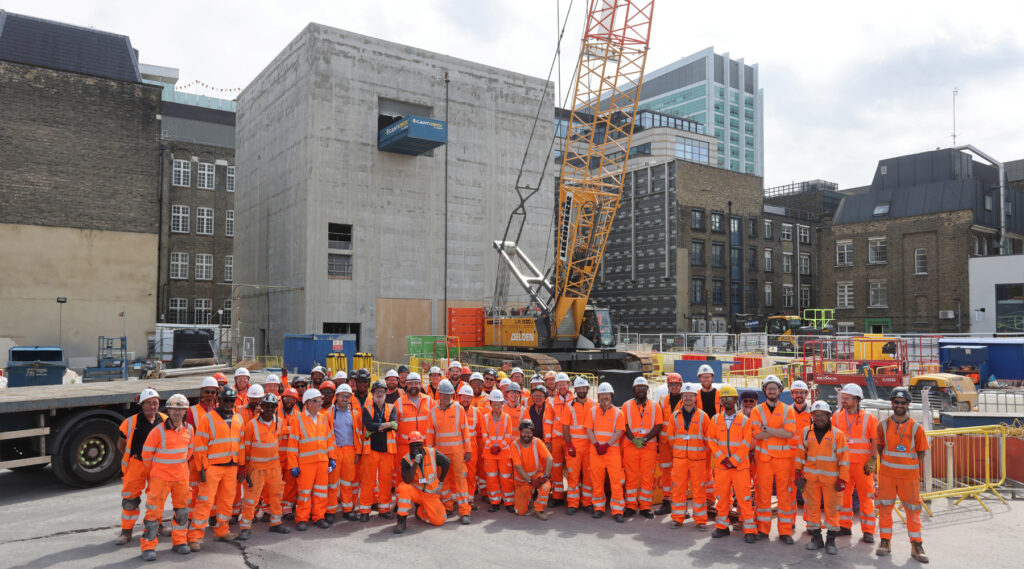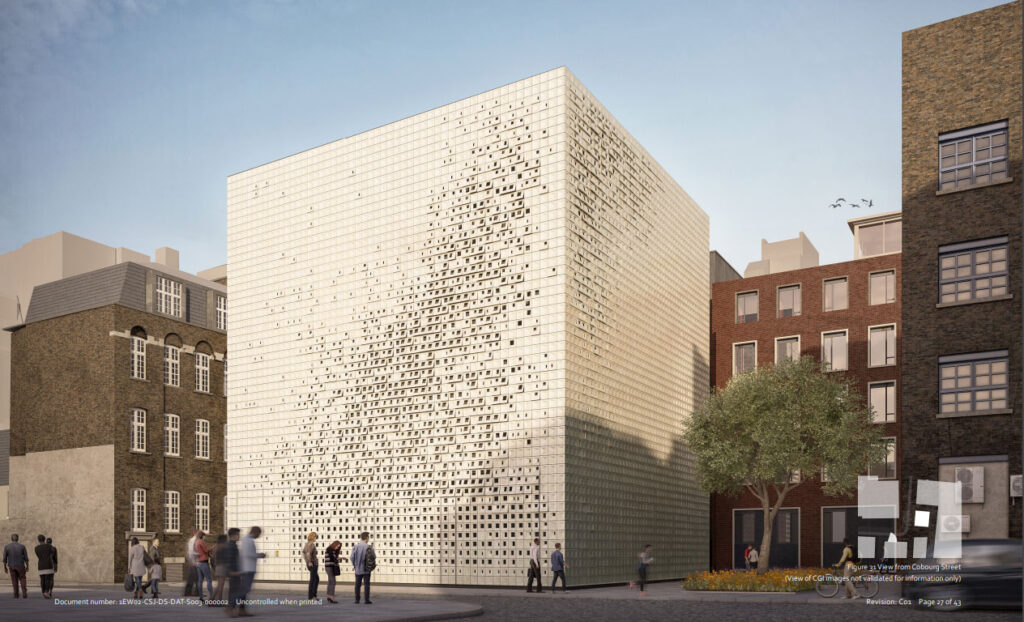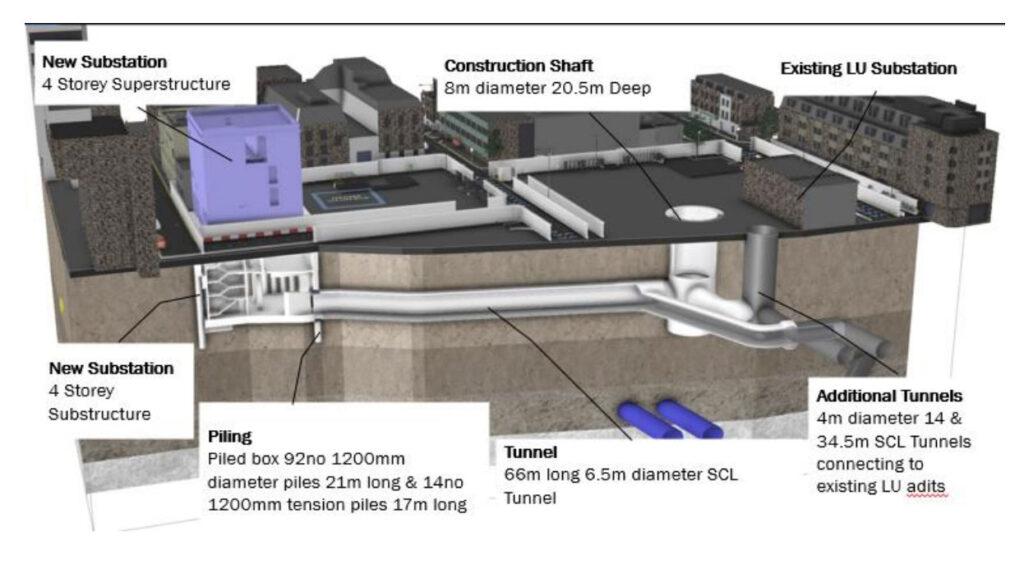A large “sugar cube” that’s being built as part of HS2’s station at Euston has been topped out, marking the completion of their first above ground structure at the station.
Although main station works were put on hold in April, this project has carried on as it is a replacement for a London Underground ventilation shaft and electricity substation that sits in the middle of the future HS2 station.
To replace the lost facility, a huge square box has been dug down into the ground nearby, and an equally large cube is being built above ground — to house both the replacement substation and ventilation fans.
HS2’s construction partner at Euston, Mace Dragados Joint Venture (MDJV), completed a three-week concrete pour to create the external walls of the superstructure of the building at the end of May. To create the reinforced concrete walls, the team used 80km of steel reinforcement bars, equivalent to the distance between London and Brighton, and poured 600m3 of concrete.
The next phase was the fit out of the internal blockwork and doors, followed by the completion of the roof on top of the structure.
Below ground, the MDJV team have excavated a 20m deep box and a 90m long tunnel connecting to the London Underground network.
Paul Leighton, Delivery Director, Mace Dragados JV said: “The traction substation project represents everything that’s exciting about complex infrastructure delivery. From working within a tightly constrained physical environment to liaising with a wide range of stakeholders and managing their competing needs. We’ve had to draw on experienced colleagues from across our diverse team and supply chain to meet this critical milestone.”

Workforce celebrate the completion of the structure of the Traction Substation for the Northern line at Euston (c) HS2
The mechanical, electrical and plumbing (MEP), and architectural fit out of the site has now begun with commissioning due to be completed in 2025. Once the new infrastructure is up and running, the old equipment currently housed in the existing site on Melton Street will be decommissioned and the building demolished.
The existing building was once an entrance and exit to what is now known as the Northern line and was designed by the architect Leslie Green. Changes to the London Underground at Euston in 1914 meant that the building was no longer used as a ticket office and entrance but was used to house ventilation equipment for the underground. HS2 will be removing some of the historic features and tiles donating these for reuse and heritage displays.









You will be assimilated resistance is futile